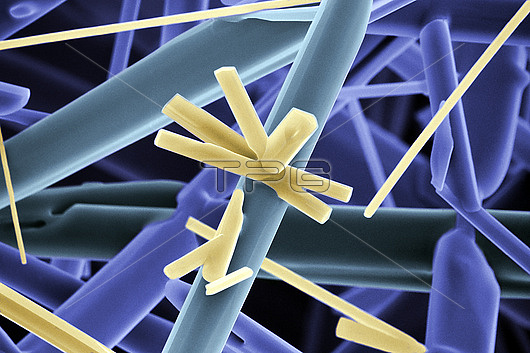
Scanning electron micrograph of crystals of anhydrous caffeine (1, 3, 7-trimethylxanthine) produced by sublimation. The picture shows needle-like crystals of the pure chemical, with (centre) twinning, resulting in a cruciform structure. The main natural sources of caffeine are the seeds of Coffea spp. (coffee beans), the leaves of Camellia sinensis (tea) and Cola nuts. Caffeine is a central nervous system stimulant that induces increased alertness and delays the onset of muscle fatigue in endurance sports. It has been shown to have some protective effect against Parkinson's disease. It may also induce insomnia and anxiety in some consumers. The most common psychoactive substance in use, caffeine is classified as GRAS by the US Food and Drug Adminisatration ( Generally Regarded As Safe ). Global use equates roughly to one cup of coffee per day for every person on Earth. Mag x 500 at 10x
| px | px | dpi | = | cm | x | cm | = | MB |
Details
Creative#:
TOP26387014
Source:
達志影像
Authorization Type:
RM
Release Information:
須由TPG 完整授權
Model Release:
N/A
Property Release:
N/A
Right to Privacy:
No
Same folder images:

 Loading
Loading